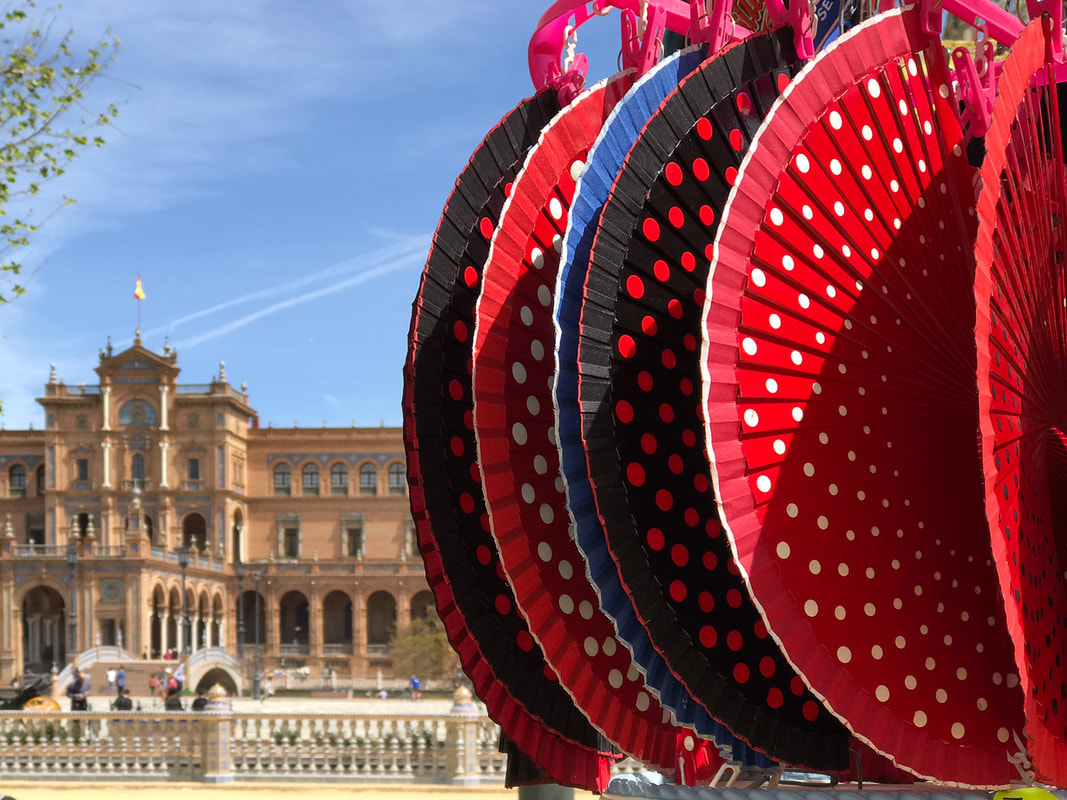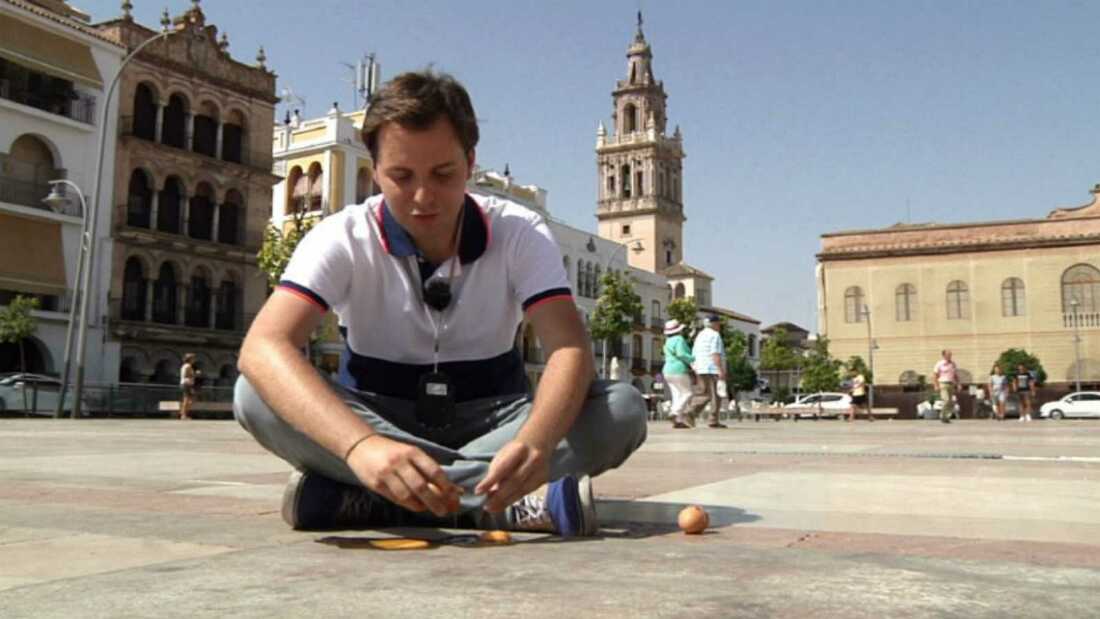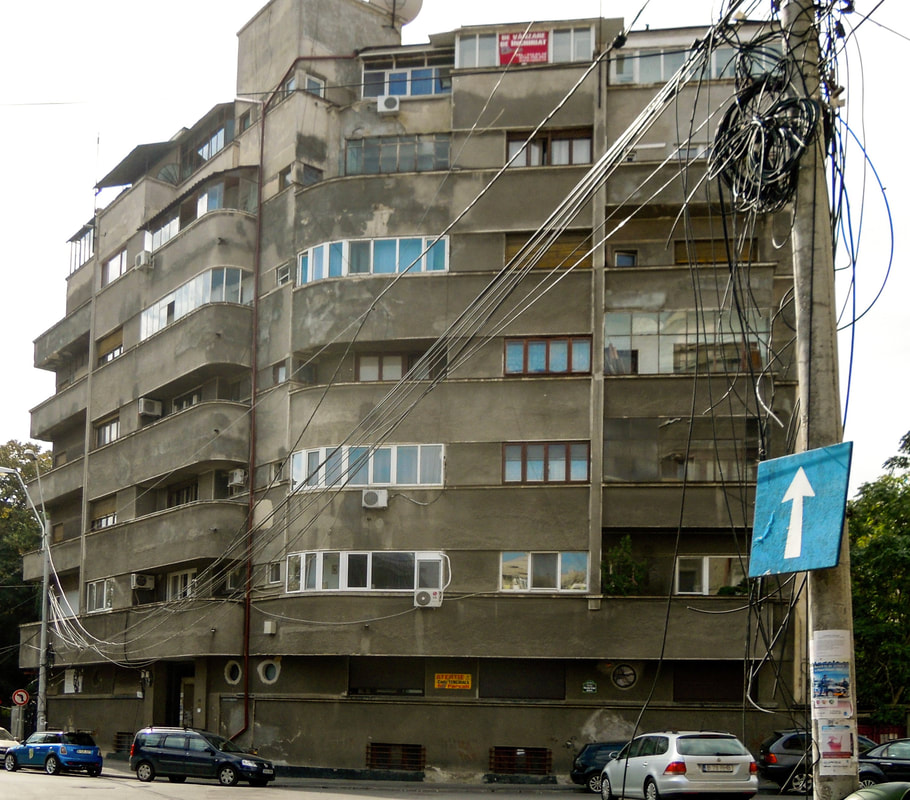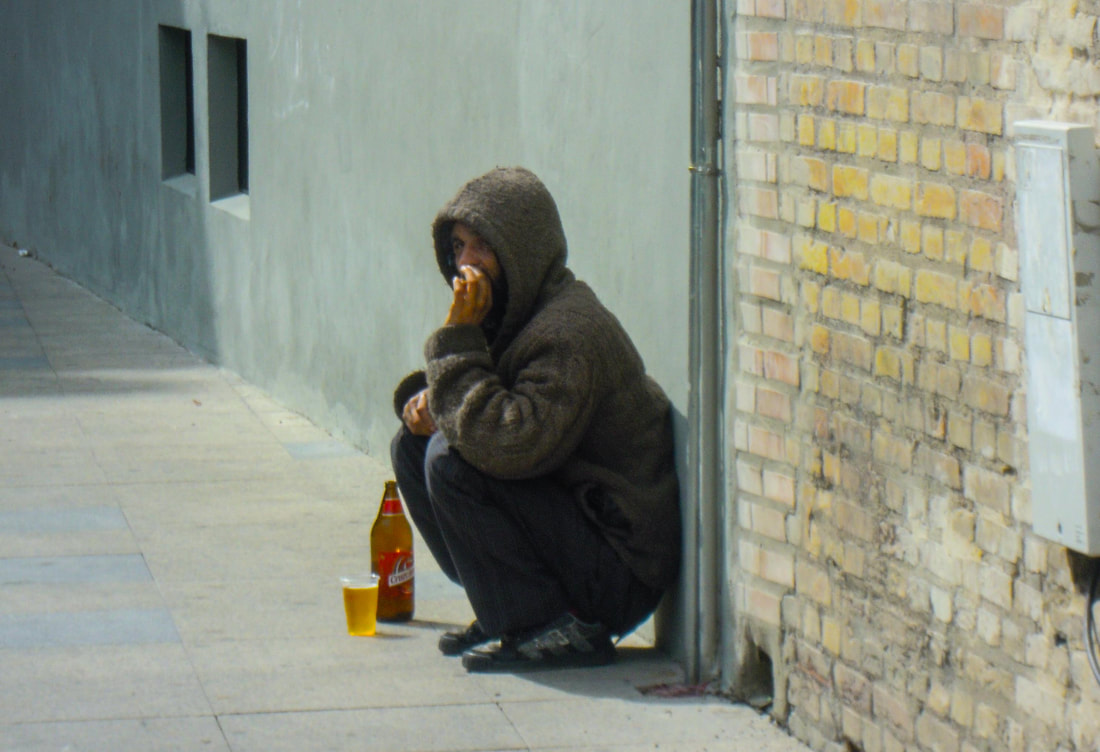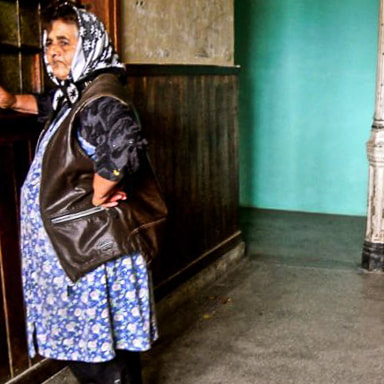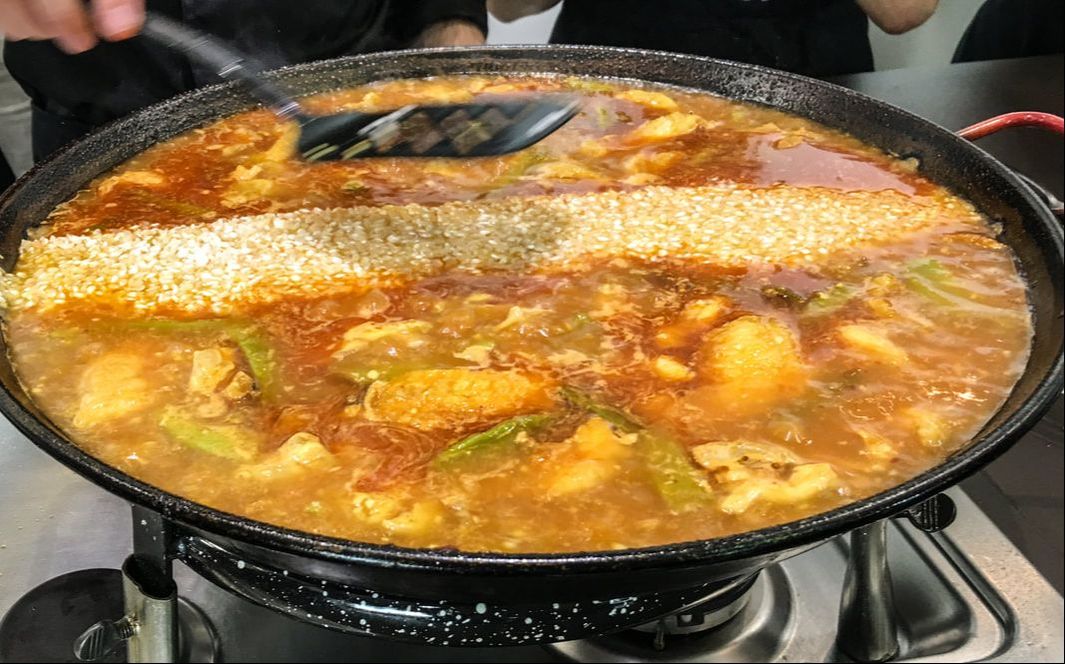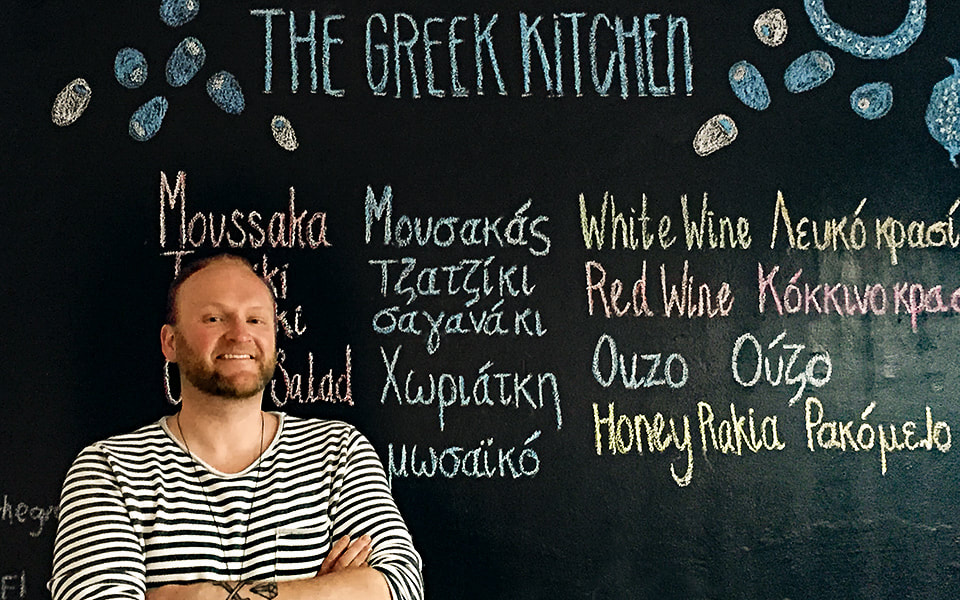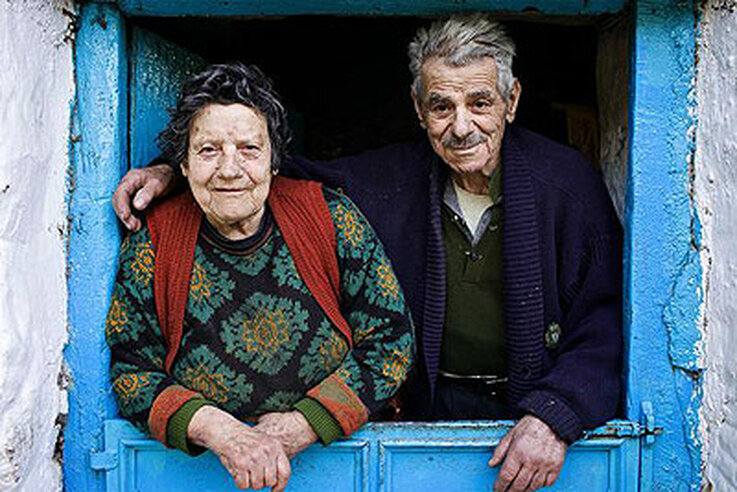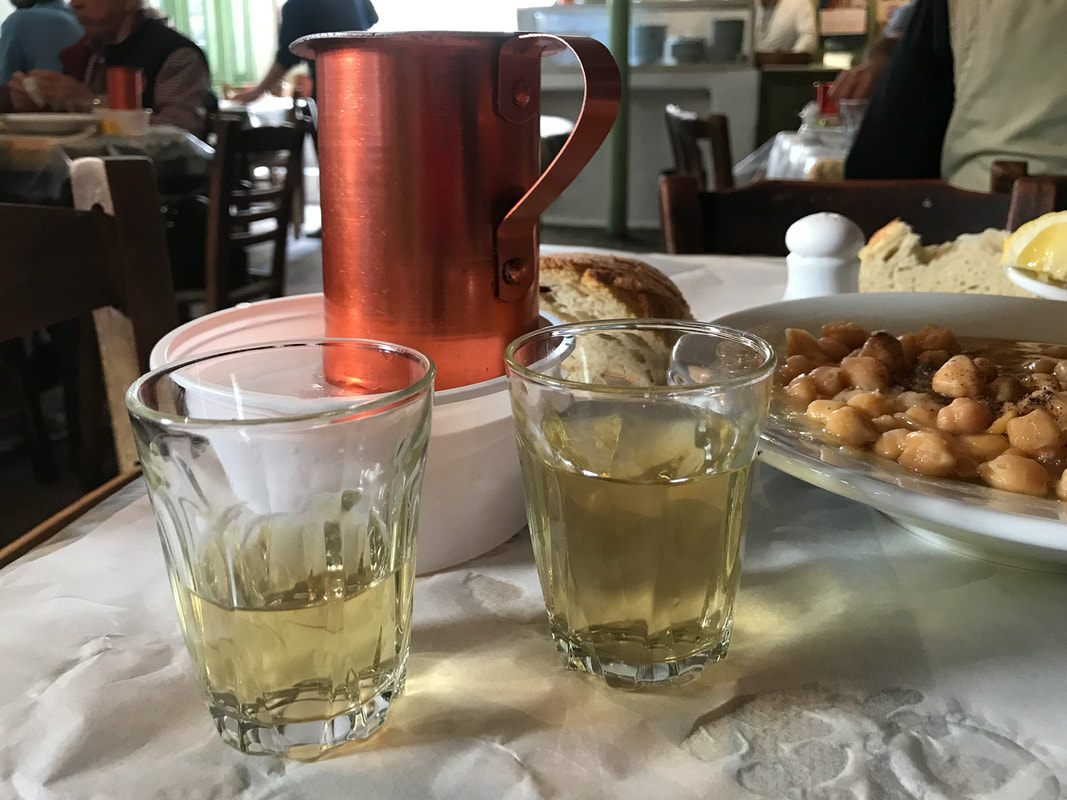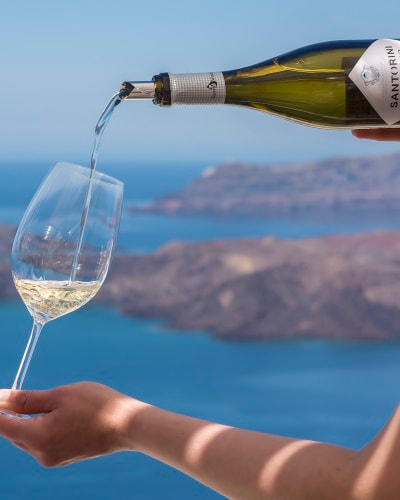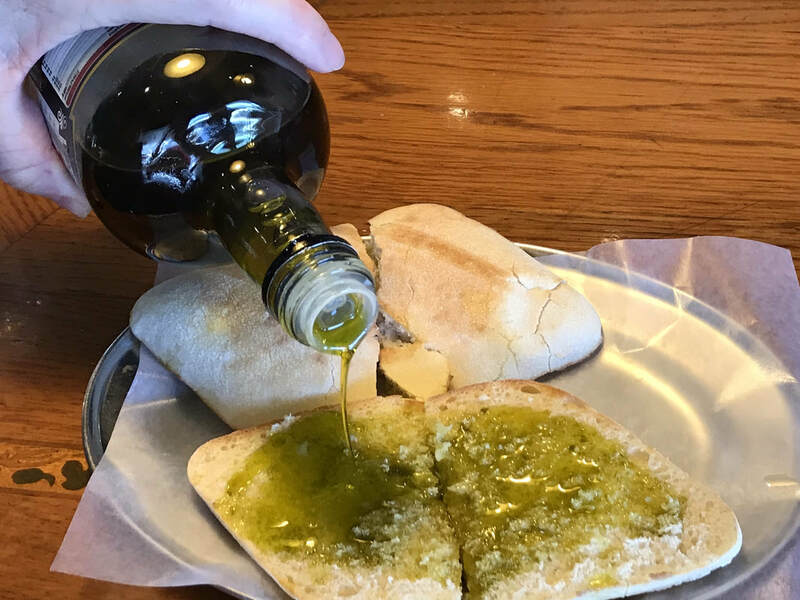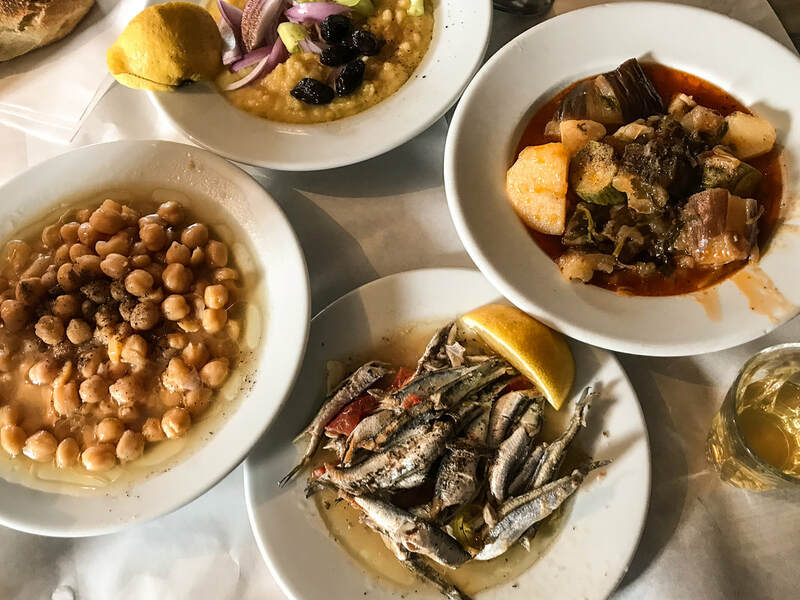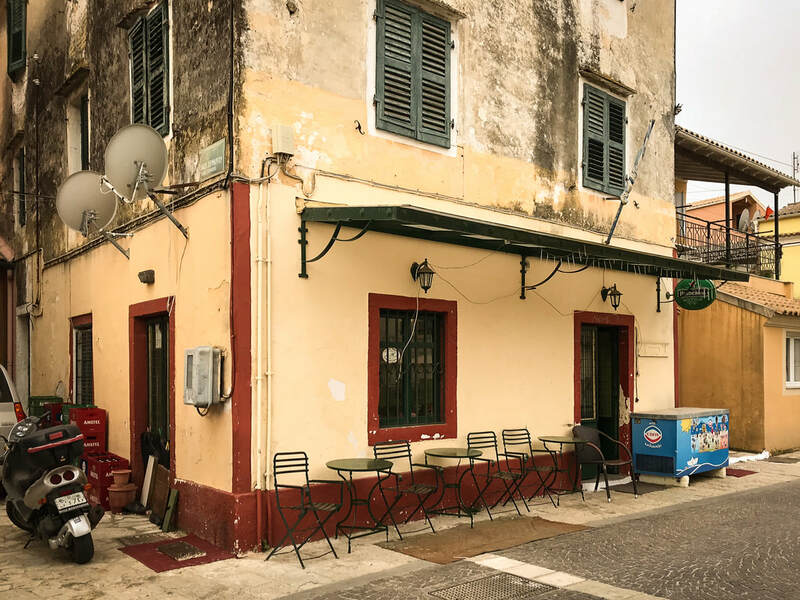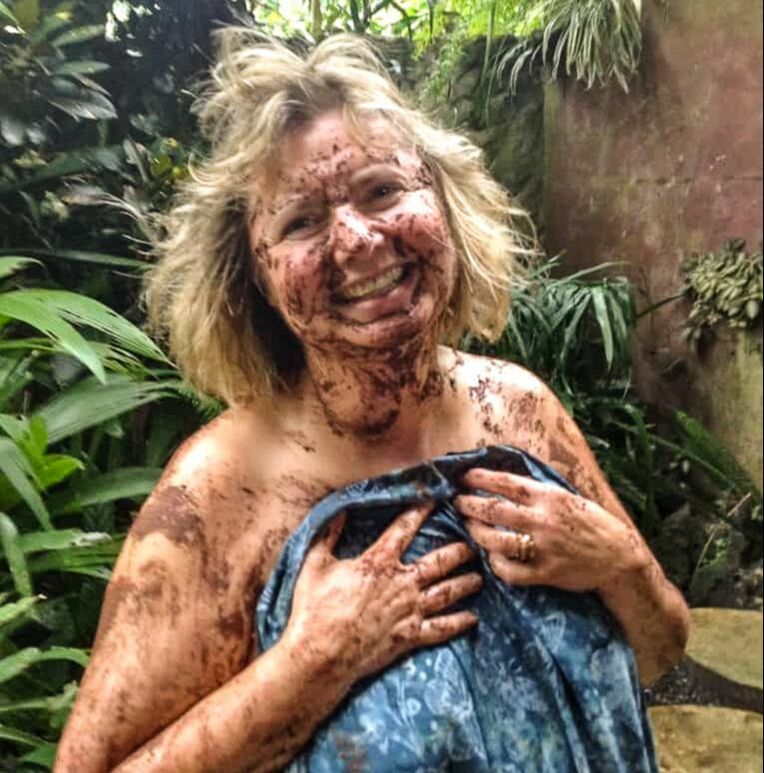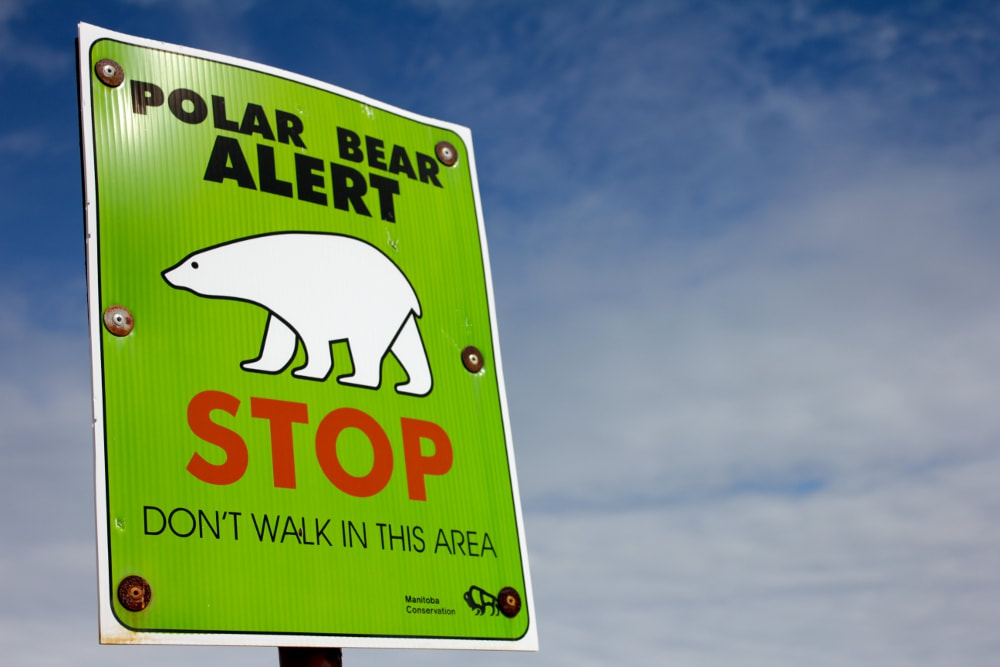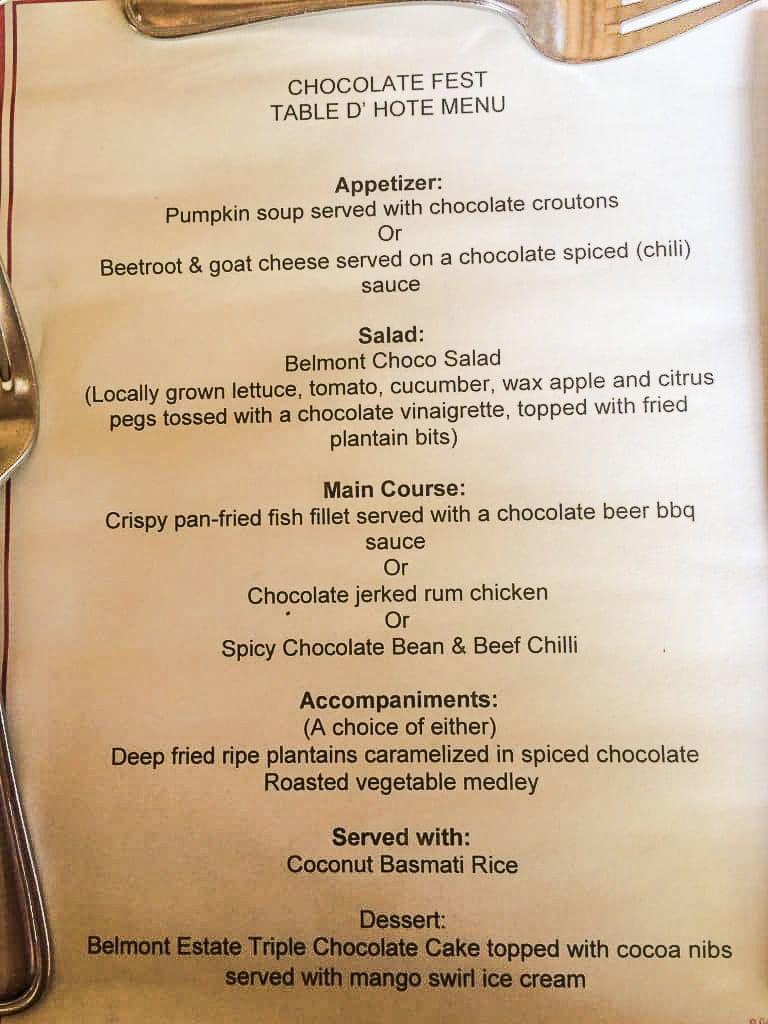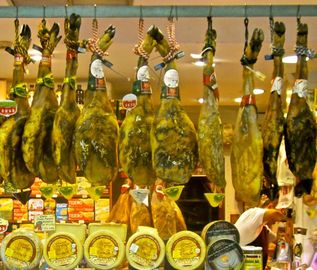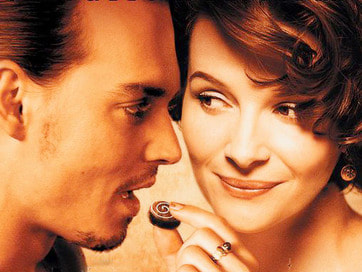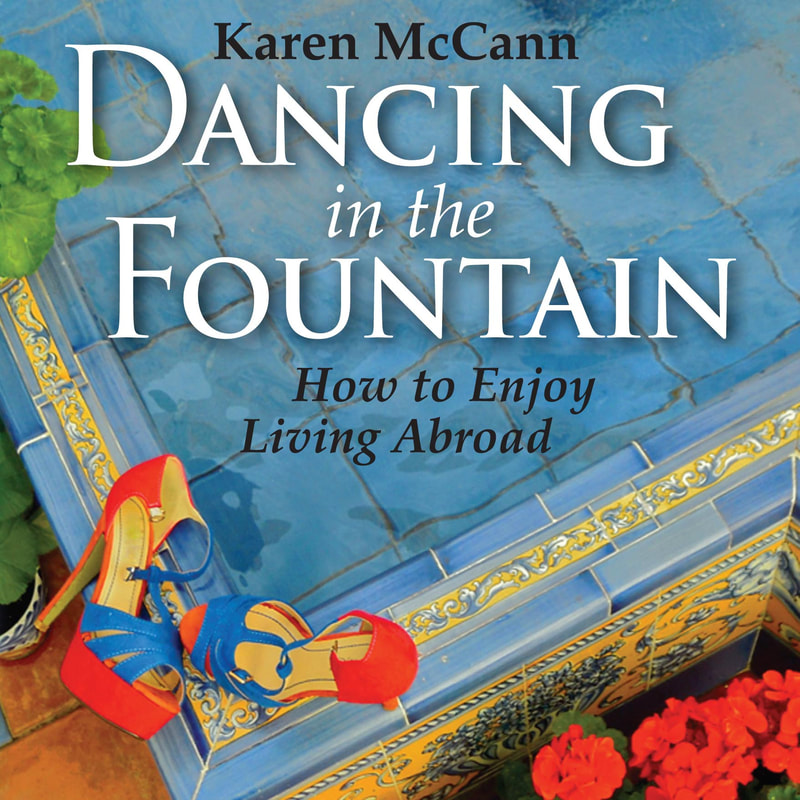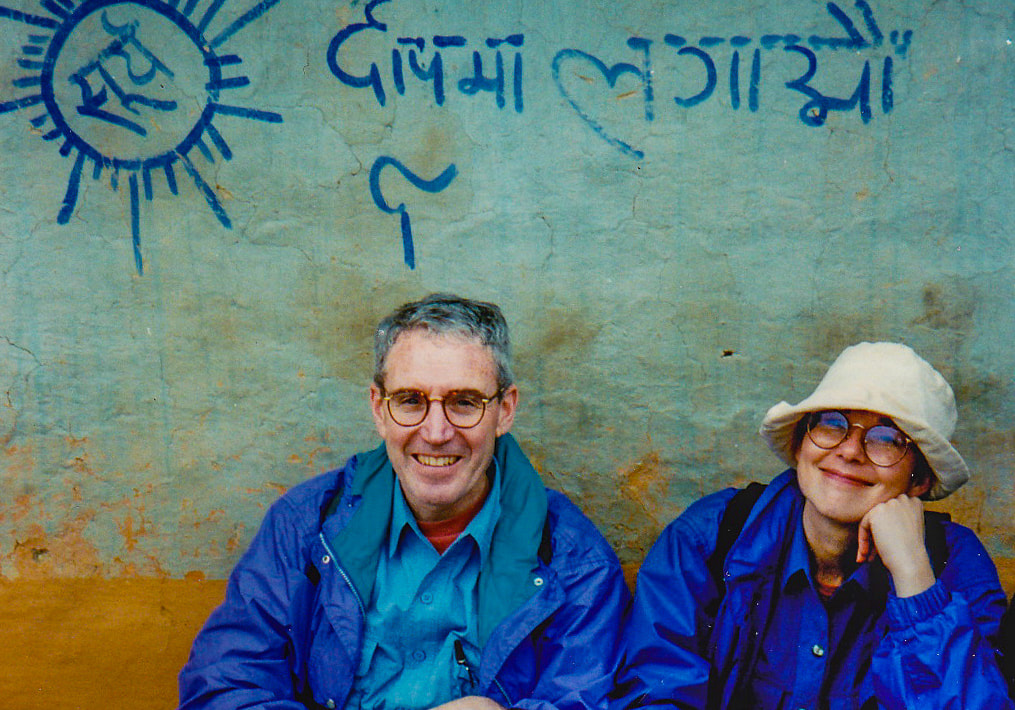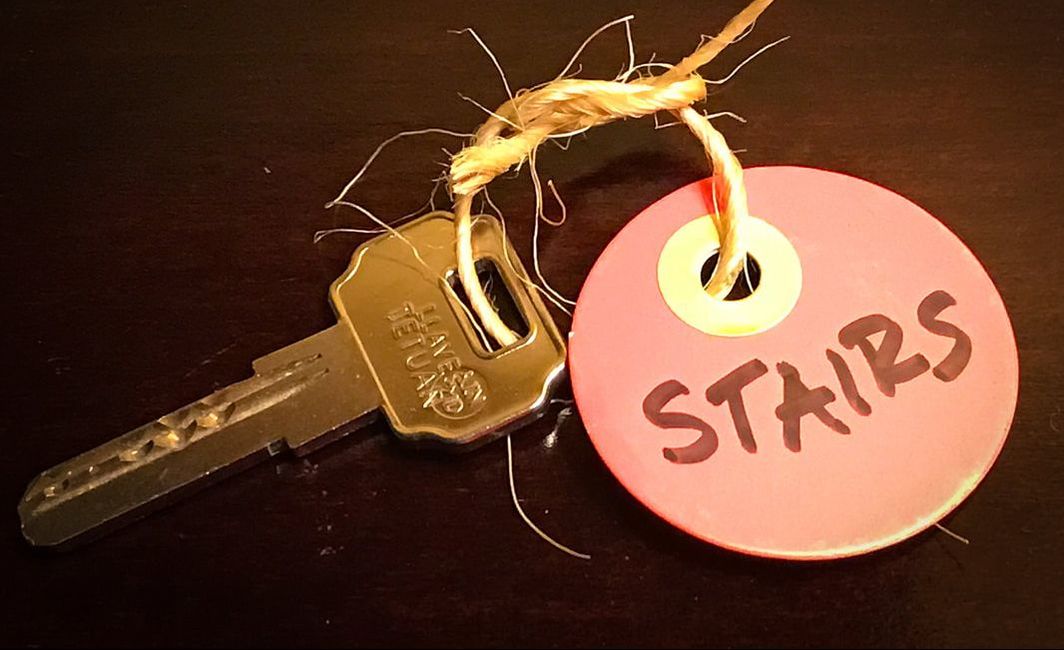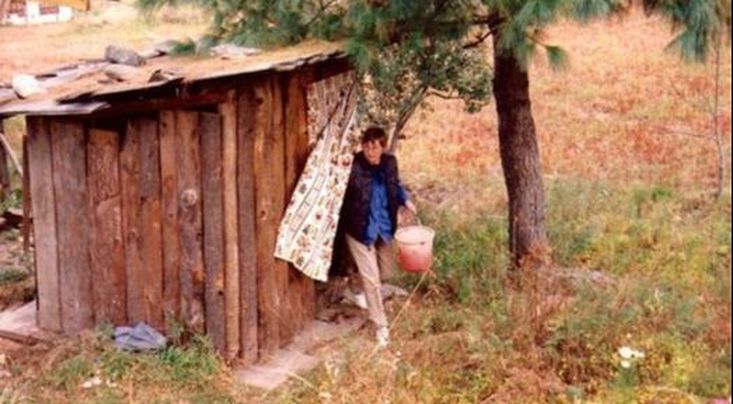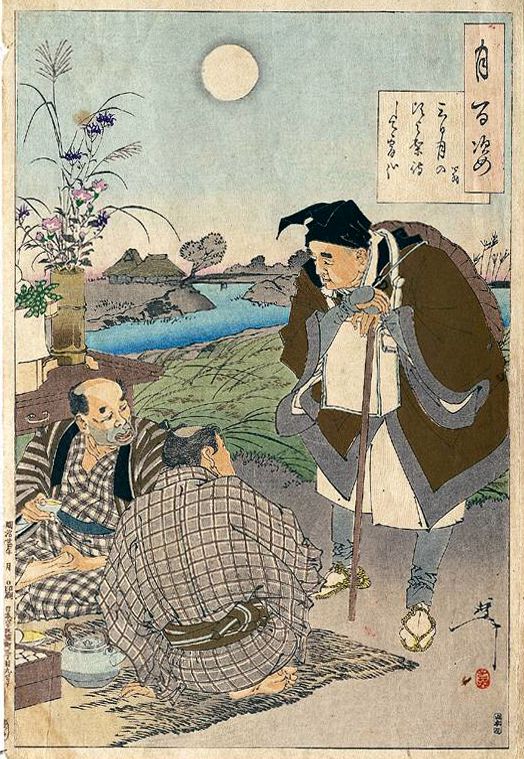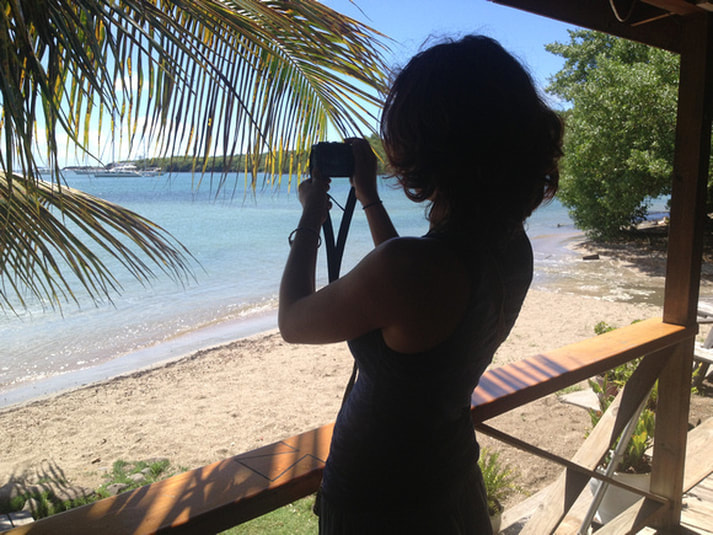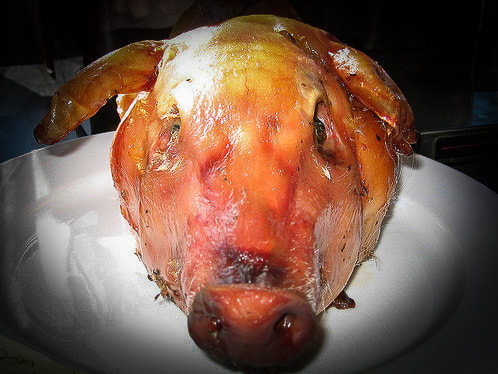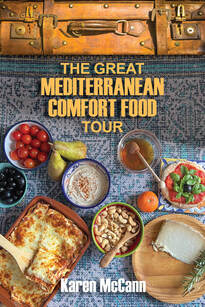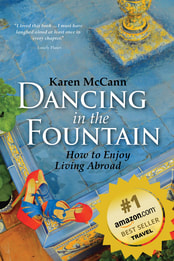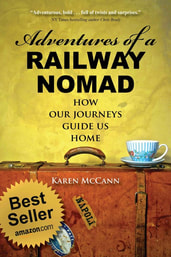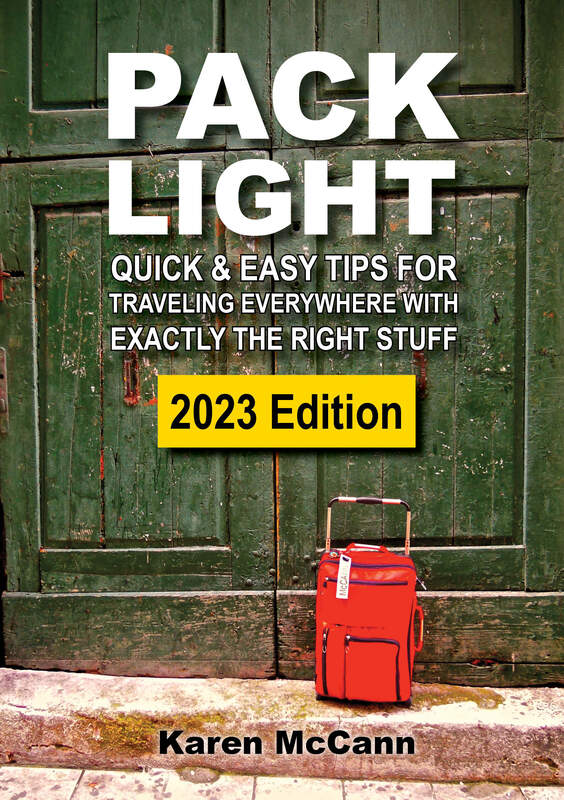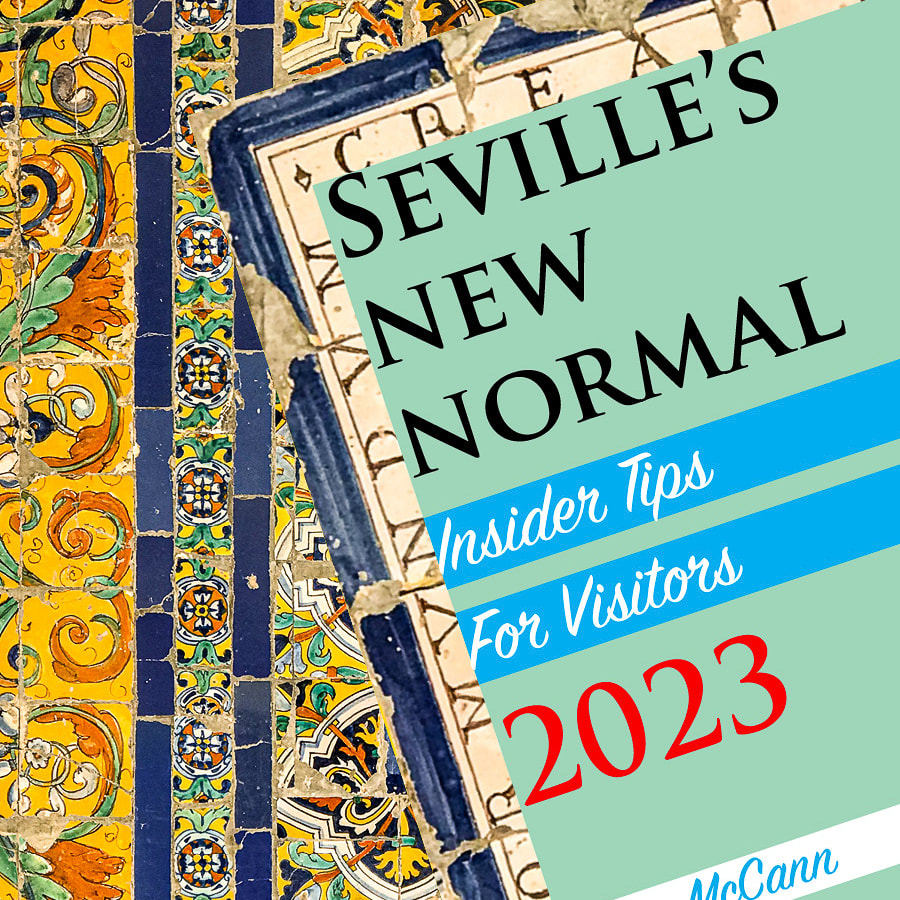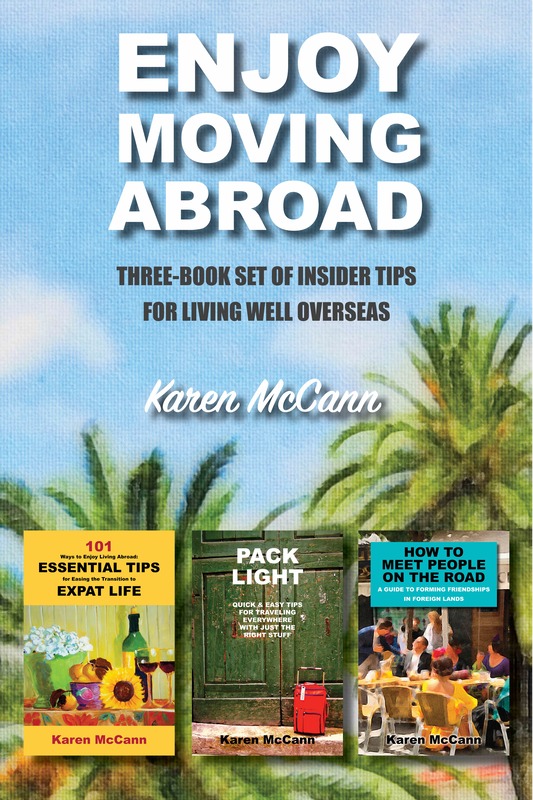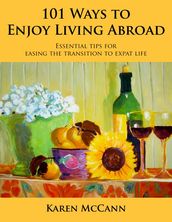|
Nowadays, everybody’s writing glowing articles about Seville, and unfortunately it’s pretty clear some haven’t even researched the city, much less visited it. Here’s a gem from Vogue: “Nicknamed ‘The Frying Pan of Europe,’ this Andalusian hotspot (literal hotspot) is drenched with baking heat for 3,000 hours on an annual basis... However, if you look beyond Seville’s near-idyllic vacation weather…” Near-idyllic? This makes it sound like an absolute hellhole! Who wants to spend their vacation in a frying pan, which (I looked it up) is typically 480 degrees Fahrenheit? And is the author implying this intolerable temperature lasts for 3000 straight hours a year? He goes on to mix metaphors in the phrase “drenched with baking heat,” implying the city is as hot as an oven (350 degrees) while somehow being both wet and dry. And for the record, nobody calls Seville “The Frying Pan of Europe.” The author is confusing it with the town of Écija 85 km away, nicknamed la sartén de Andalucía (the frying pan of Andalucía) for its sizzling hot summers. Andalucían journalist Johathan Gómez wonders if it's really possible to cook an egg on the main plaza of Écija, nicknamed the frying pan of Andalucía. Result? Two nicely fried eggs. For fun, watch the video even if you don't speak Spanish. My point is: choosing a destination based on Internet intel is always a risky proposition. Articles all too often contain dubious, second-hand information or are skewed by personal bias. In fact, some read as if they were dashed off on a cell phone during the first sun-drenched, wine-soaked hours with a new local love interest — circumstances that can be difficult for the rest of us to replicate. And as you may have noticed, if everybody in the blogosphere praises a city as ideal for #travelin2019, chances are it’s already overrun with tourists and is busy becoming a Disneyland version of its former self. Then again, sometimes we stumble into a town that’s just plan appalling by any standard. How can we make the best of a disappointing destination? For me, the first step is letting go of my expectations and initial impressions. Take my first visit to the Romanian capital: Rich and I spent a week in Bucharest, and it was love at fourth sight. Having spent three weeks enjoying the storybook beauty of Romania’s smaller cities and rural villages, it took us a little while to look past the brutal apartment blocks, massive tangles of electrical wires, decaying old buildings, and graffiti to see the charm. But we now know Bucharest as a city that has survived just about everything, cherishes the best of its old traditions, and knows how to take life as it comes, with a joke, a swig of homemade plum brandy, and an arm around your shoulder. This is one of the friendliest cities we’ve ever encountered. We were welcomed everywhere, are leaving many new friends behind, and hope to return again soon. It’s only natural to arrive at any unknown destination hoping the city will instantly show us its richest and most beguiling treasures. But to truly love a place requires slowing down enough to engage with it on its own terms, letting the relationship unfold naturally. As travel author Pico Iyer put it: "Visiting a new town is like having a conversation. Places ask questions of you just as searchingly as you question them. And, as in any conversation, it helps to listen with an open mind, so you can be led somewhere unexpected. The more you leave assumptions at home, I’ve found, the better you can hear whatever it is that a destination is trying to say to you.” Visitors sometimes assume that Seville is best enjoyed as a vacation playground, but to focus exclusively on the cheap wine, warm weather, and vibrant bar culture means selling the city — and your vacation — very short indeed. Seville makes every effort to tell you about its more interesting features, like the stubbornly maintained ancient traditions, a lifestyle based on the demands of climate rather than commerce, and deep-seated devotion to family, friends, and social lives. Philosopher Alain de Botton wrote: “One rarely falls in love without being as much attracted to what is interestingly wrong with someone as what is objectively healthy.” So how can we find out what’s “interestingly wrong” about a city, especially if we find ourselves in one that appears deadly dull or seriously off-putting? A good first step in popular destinations is leaving the congested tourist area behind and striking out in a new direction. Rich and I like to pick a Point of Interest (POI) a half hour’s walk from the center and make our way there, allowing plenty of time for spontaneous detours, digressions, and coffee stops. How do we find these POIs? Some of my favorite resources are Atlas Obscura, Like a Local, and Triposo, all of which describe wondrous things to see and do in places you’ve never heard of. And before giving up on any city, it pays to check with the tourist office, as we did a few years ago upon arriving in the seemingly dull Šiauliai , Lithuania. “I think we’ve finally found it,” I said to Rich. “A town where there is literally nothing to do.” We were dragging our suitcases from the train station toward our hotel, walking past endless bland apartment blocks, unrelieved by a single shop, café, or even newsstand. After the dizzying mix of zingy modernity and storybook charm we’d encountered in other Baltic towns, Lithuania’s Šiauliai (it’s pronounced Show-lay and means “sun”) seemed desperately drab. Two hours later we were sitting at a sidewalk café table on the main pedestrian street, flipping through folders from the tourist information office and trying to juggle our schedule to fit in everything we wanted to do. “Let’s go to the traditional Lithuanian kosher dinner at Chaim Frenkel’s Villa this evening,” I said. “Then we can catch the music at Juone Pastuoge tomorrow. I just hope we’re not too tired after visiting the Hill of Crosses and the Battlefield of the Sun. Do you think we’ll be back in time to catch the fado concert?” The Cat Museum had long since been jettisoned from the agenda, but Rich was still standing firm on the need to visit the Chocolate Factory. I guess it comes down to this: You may not fall in love with every place you visit, but if you walk into it with an open mind and generous heart, chances are you and this city can get past being strangers, find common ground on which to meet, and share a few good moments, maybe even some great ones. And isn’t that enough to ask of any journey? YOU MIGHT ALSO ENJOY
6 Comments
Stephen Akehurst, proprietor of The Greek Kitchen, in Athens, Greece. Photographed by Ioanna Fotiadi for Greece Is One of the things I loved most about being a teenager was all the sneaking around. After years of being a studious, obedient Catholic school kid, around age fifteen I suddenly discovered the joys of clandestine shenanigans. Want details? It was the sixties. Enough said. But zipping off to another country? That never even crossed my mind. So I was impressed and charmed by the story of Stephen Akehurst of Brighton, England, who at the age of seventeen told his mother he was visiting London and instead snuck off to Athens, where he began a lifelong love affair with the city, the culture, and the food. Why Athens? When I was a child in the UK the supermarkets built massive stores on all the nurseries and farmer's markets, taking away local produce, dictating what we should be eating, and covering it in plastic. The thought of Greece with its blue water and white houses and fresh produce seemed like paradise. Athens was crazy and alive and filled with colour. The central market was amazing and terrifying at the same time; it was a real onslaught of the senses. But I was hooked. Once you've eaten real Greek food in Greece you've spoiled yourself for many other cuisines. Wanderlust later took you to Latin America, Amsterdam, and Copenhagen, but you kept returning to Greece. Travel led me to a career as a tour manager with a small-group travel company, and I got to work in Greece a lot. During the tours I would always talk about the amazing local food and how important it was to eat as many local dishes as possible. People started asking about cooking classes, of which there were few, often more suited to budget travellers. I saw a gap in the market and decided to settle in Athens and fill it. Is it true that Greek food and wine can help you live 100 years or more? The island of Ikaria is a Blue Zone, where people live far longer than the national average, and it is believed that drinking the local wine, along with a high-plant diet and plenty of physical activity in a great climate, contribute to this. This is quite common throughout Greece; you will see people living independently well into their elderly years. Today, Ikarians are almost entirely free of dementia and some of the chronic diseases that plague Americans; one in three make it to their 90s. A combination of factors explain it, including geography, culture, diet, lifestyle, and outlook. They enjoy strong red wine, late-night domino games, and a relaxed pace of life that ignores clocks. Clean air, warm breezes and rugged terrain draw them outdoors into an active lifestyle. Cooking classes led to market tours, and now you’re launching wine tastings? We really wanted the wine tasting at The Greek Kitchen to be a fun learning experience for anyone, no matter their level of interest or experience in wine — a low-key few hours with great wine and great company. We give you an introduction to each wine, talk about the region and pair the wines with local dishes. Cooking is at the heart of everything we do at The Greek Kitchen. So I gathered up the whole team, who all come from different parts of Greece and have very different tastes, and we drank the wines to work out the pairings. Each team member brought something interesting and unique to the table, and we surprised each other. The wines are all quite versatile, and we have so many amazing things to eat in Greece that we want to encourage people to really explore the combinations. What about retsina? Retsina is an interesting one! It's considered to be the oldest wine we drink here. The flavour is influenced by the ancient Greeks’ use of resin to line the wine barrels. It can be really hit or miss; personally I have to have it ice cold if I'm going to drink it. While retsinas are produced all over Greece, it’s considered the drink of Thessaloniki; Afros, the one that we use in our wine tasting, is from there. Retsina goes with a lot of your classic Greek dishes like Greek salad and fish; it pairs really well with sharp ingredients like barrel-aged feta and the other cheeses. However people who love retsina will drink it with anything. It’s nice in a spritz, and some people even drink it with coke, but that's a bit gross even for me! Rich and I loved the Greek wines we tried there last spring — including the retsina at Diporto, a modest underground eatery near the central market in Athens. They didn't even ask if we wanted it; they just automatically put a jug of it on the table. For more, see my post The Mystery of the Vanishing Greek Taverna. Any advice for people who aren’t in Greece but would like to try the wines? To be honest it can be really hard to find Greek wine outside of Greece; for some reason we don't export very much. But if you find some, I would start with a classic like an Assyrtiko, an old variety from Santorini — so it is rich with minerals and has an essence of the sea in it. My favourite at the moment is Greek sparkling wine. We have a Moscato Blanco from the island of Limnos, and it's so fruity and fun; just the smell of it makes me think of having a great time with friends and eating sticky orange pie. Photo by Santo Wines For those planning a visit to Greece, what wines would you suggest? There are so many! I really love going to Santorini and exploring the wineries there. Santo Wines is so dreamy and in one of the most amazing locations on earth, while Domaine Sigalas and Gaia Wines are also producing some amazing bottles. Closer to Athens you have the Spata region with Gikas, Boutari, and Papgiannakos — all worth checking out. Then in northern Greece you have the Naousa region with excellent wineries like Dalamara and Argotia. The ancient Greeks were masters at wine cultivation and most of the techniques and practices that we use today were developed by them; we're talking about centuries of skills and experience being passed down from generation to generation. Wine is at the heart of so many occasions; we drink it at celebrations, with family and friends, in religious services, and use it in many of the dishes we enjoy. I can't remember the last time I went to a Greek home and wasn't given a jug of wine to get through. One of the joys of leaving the teenage years behind is that you no longer have to sneak around to obtain a jug of wine. Also, you’re able to bring a bit more budget and discernment to the party. Rich and I plan to be in Greece this summer (more about that in future posts) and we’re looking forward to checking out as many of Stephen’s suggestions as possible. Will we try retsina with coke? Stay tuned to find out. Unlike some of my better-organized and more practical blogger friends, I do not accept sponsorships or product placement of any kind. Any products and services I mention in my blog, books, or website are there solely because I believe you might find them interesting and useful in planning your own adventures. YOU MIGHT ALSO ENJOY 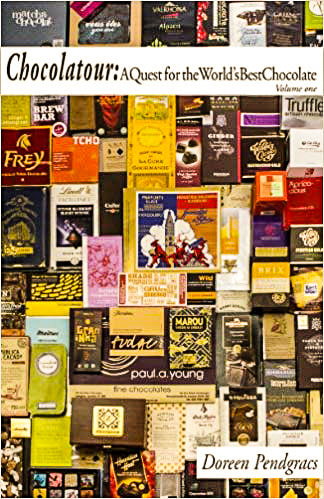 Did you ever notice there are no recipes for leftover chocolate? That’s because it doesn’t exist, at least not in my family. When Rich first started coming to our summer reunions, he showed up with a two-layer box of See’s Nuts & Chews for each of my sisters. “I’m not saying I can be bought,” one said. “But this is a good down payment.” Over the years I’ve written about chocolate’s surprising health benefits, how the French use it to lose weight, and the heady delights of a Nativity scene composed of 1500 kilos of chocolate. But now I find I’ve just been scratching the surface. Canadian journalist Doreen Pendgracs has been traveling the world digging deep into the history, cultivation, production, and joys of cacao in all its many forms. In the spirit of selfless research, she’s even gone to spas where she was bathed from head to foot in warm, molten chocolate. (I know! That’s my idea of heaven, too!) I felt I owed it to you, my readers, to find out more about Doreen’s fieldwork, which is chronicled in her award-winning book Chocolatour: A Quest for the World’s Best Chocolate. This first volume of her trilogy covers Europe; the second, due out in March, focuses on the Americas and the Caribbean. What made you decide to write about travel and chocolate? I embarked on my freelance writing career in 1993, and fortunately one of my editors assigned me a story that opened the door to travel writing. It was about a lodge up in Churchill, Manitoba, Canada—Polar Bear Capital of the World. I remember going dogsledding in Churchill when it was -66 degrees Celsius (that’s almost -87F with the windchill factored in!). I was never colder in my life. Not every trip of a travel writer is glamorous! Later I decided to combine my love of travel writing with my love of chocolate; I would make it my mission to educate the travelling public and chocolate lovers around the world about all the different aspects of chocolate travel. That includes interviewing hundreds of chocolatiers, visiting cacao plantations in various growing regions, attending chocolate festivals, attractions, and events, and discovering every delectable aspect of chocolate around the world, my favorite being chocolate spas. What spa experience was the most drop-dead fabulous? I’ve had some pretty decadent chocolate body treatments in some pretty fancy spas, but the one that stands out for me most was at the Pure Jungle Spa in Puerto Viejo, Costa Rica. The cocoa was so fresh that the entire experience was totally intoxicating. The aroma of the freshly pressed cocoa beans was pure and intense, and as the cocoa seeped into my pores, a beautifully natural high overtook me. Cocoa beans release serotonin and dopamine into the body, and whether we ingest it orally or through our pores, we become overtaken by a natural high if we consume enough of it. So there I was — in the outdoor jungle shower — trying to wash off the cocoa that had been slathered onto my body while laughing hysterically in a totally joyous state. Where have you found the most amazing chocolate culture? I’d have to say Switzerland. The Swiss live and breathe chocolate. They are the highest consumers of chocolate in the world, chocolate festivals and events are common, and the quality of Swiss chocolate is superb. But I think you have to go where cocoa is grown for completely authentic cocoa culture, and the best chocolate spas and cocoa cuisine I’ve encountered (to date) are in the Caribbean. Hotel Chocolat Boucan in St. Lucia is a perfect example. They grow the cocoa close to the resort, the on-site spa specializes in treatments that feature cocoa, you can learn how to make chocolate right from the cocoa beans, and cocoa cuisine is the basis of the menu. An all-cocoa dinner? Is that too much of a good thing? Absolutely not! When done well, each course features a different side of chocolate. There will be courses that are savory or sultry. A couple of the best I’ve ever had were in Winnipeg: chocolate ravioli and cocoa-rubbed ribs (chocolate ravioli filled with orange and thyme, and duck finished with a Frangelico cream sauce garnished with cocoa nibs, hazelnuts, and pea shoots). You’re gearing up to lead chocolate tours around the world. What’s the plan? Yes, I would indeed like to lead small groups on chocolate travel tours — to be the ambassador and guide who helps educate, entertain, and entice chocolate lovers to experience the ever-changing world of chocolate in a fun yet meaningful way. Up until this point in time, I had family obligations that prevented me from being away too much. And at present, I am working on volume II of my trilogy. But within a year, I do expect to lead the first-ever Chocolatour customized group adventure abroad. What about the worrying articles suggesting climate change may endanger the world’s chocolate supply? Climate change may be wreaking havoc in some growing regions like Cuba, Puerto Rico, and the Dominican Republic, where hurricanes have completely ravaged cacao crops on occasion. But climate change has also seen cacao being grown in regions where it previously did not grow like Hawaii, and more recently, Miami, Florida. So I don’t think we chocolate lovers have to panic at this point in time. It is quite likely that the price of quality chocolate will continue to rise, but I don’t think we’ll run out of it any time soon. Whew! Looks like chocolate isn’t headed for extinction (yet). But just in case, I have added it to the modest stockpile of survival food in my Catastrophe-Preparedness Kit. And I’m keeping plenty on hand in my snack cupboard, too. Because in these uncertain times, one thing I know I can rely on is the healing power of chocolate to sustain me during dark days and add joy to everything from family reunions to world travel. Bon appétit! Unlike some of my better-organized and more practical blogger friends, I do not accept sponsorships or product placement of any kind. Any products or services I mention in my blog, books, or website are there solely because I believe you might find them interesting and useful in planning your own adventures. YOU MIGHT ALSO ENJOY Did I ever tell you about the night I was on my way to New York to be interviewed on national TV and managed to get myself locked inside a museum in Cleveland? This was back in the nineties, when I was living in Ohio and serving on the board of a minor downtown museum. As usual, I was running behind schedule, and squeezing in a late board meeting left me with barely enough time to race to my car, drive to the airport, and catch the last plane to New York. I spent most of the meeting fretting. Had I remembered to pack my hair dryer? Chosen the right dress? Brought the plane tickets? When the board finally adjourned, I dashed upstairs on some errand I can’t recall, probably leaving a note or file on the front desk. I do remember with hideous clarity being halfway across the dimly lit lobby and hearing the stairwell door swing shut behind me. And lock. That’s when I realized I was trapped. Every exit was bolted, and the building was deserted; the modest museum had no security guards at night, and in the five minutes since the meeting had ended, all the other board members had leapt in their cars to head home. The landline was shut down for the night, and in those long-ago days before the Internet and cell phones, this meant there was no way to contact the outside world. Scenes from various action movies tumbled through my head. Pick up a chair and smash a lock or a window? Use a lighter (not that I had one) to set off a fire alarm? No, what I needed to do was think. And then the opening lines from my favorite poem, Lost, drifted into my head. “Stand still. The trees ahead and the bushes beside you are not lost. Wherever you are is called Here.” I stood still. I thought about what was here. And my eyes fell upon the front desk. Aha! I walked behind it, found a key labeled “Stairs,” and made my escape. I caught the plane to New York with minutes to spare. I often think about that night and the lesson it taught me about standing still long enough to see a place not from my own viewpoint but from that of those who normally inhabit it. Over the years, that memory has helped me feel at ease in a wide range of unfamiliar places, such as the underground military bunker in Lviv, Ukraine, the Bigfoot Discovery Museum in California, and the Bhutanese guesthouse outhouse that I could only reach by scaling a high wall. (Luckily it was a moonlit night and there were ladders on either side of the wall, but still!) Those lines of poetry and those moments in the museum remind me that no matter how lost I may feel, the place I’m standing is familiar to somebody, and in fact may be their most cherished definition of “home.” A friend recently told Rich, “I don’t know how you two handle road trips lasting months. After three weeks I need my own bed. I need to be home.” But for many of us, especially expats, the definition of home has become pretty elusive. Is it one of the seven houses I lived in before I went to college? The old stone house outside of Cleveland where Rich and I spent the first two decades of our marriage? The apartment we’ve rented in Seville for 14 years? The cottage north of San Francisco where we spend our summers? In Real Simple, a reader suggests, “Home is a place you can feel comfortable cooking breakfast in your pajamas.” I love this definition, because it embraces every Airbnb apartment I’ve ever rented. And that’s my point. Home isn’t a place, it’s a feeling of belonging. And with luck and a bit of practice, you can take that feeling with you pretty much anywhere. Just because you’re not sleeping in your own bed doesn’t mean you have to feel alienated and adrift in the world. As the 17th century poet Matsuo Bashō put it, “Every day is a journey, and the journey itself is home.” When Rich and I are about to embark on a long journey, I often have a few days of the pre-launch jitters, rushing about feeling as fretful and distracted as I was that evening in Cleveland preparing to fly to New York. But once we actually hit the road, all that tends to fall away, and I find myself comfortably settling into a state of bemused wonder, waiting with a pleasurable sense of anticipation to see what’s around the next corner. And that feeling, as much as anything else, is what I call home. YOU MIGHT ALSO ENJOY |
This blog is a promotion-free zone.
As my regular readers know, I never get free or discounted goods or services for mentioning anything on this blog (or anywhere else). I only write about things I find interesting and/or useful. I'm an American travel writer living in California and Seville, Spain. I travel the world seeking eccentric people, quirky places, and outrageously delicious food so I can have the fun of writing about them here.
My current project is OUT TO LUNCH IN SAN FRANCISCO. Don't miss out! SIGN UP HERE to be notified when I publish new posts. Planning a trip?
Use the search box below to find out about other places I've written about. Winner of the 2023 Firebird Book Award for Travel
#1 Amazon Bestseller in Tourist Destinations, Travel Tips, Gastronomy Essays, and Senior Travel
BLOG ARCHIVES
July 2024
CATEGORIES
All
|
